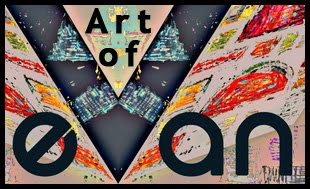Remove The Bolts 1
Here is a new version for my Wrecked Tangles (Encircled) W series. It's called Remove The Bolts because I removed a page from an old repair manual for a Ford Mustang (1979 - 1993), and integrated it into a digital collage with pieces from Wrecked Tangle W1. Are there deeper messages in this one? The only thing I can think of right now that might indicate a deeper message is the fact that some text from the other side of the page from the repair manual bled through so you can make some of it out. I'm all for the subconscious communication phenomena when making art. Sometimes I can see messages or words associated with synchronistic events in my dreams or throughout my day.
Relationships with things or people is the reality pretty much all of us experience. Giving visual form and color to our myriad of relationships would tend to "bleed through" into the creation of art, I sincerely believe. I feel more of a sense of accomplishment and command after I work something out on the picture plane. It is a similar feeling to putting words to one's dreams, feelings, and experiences with relationships. A sense of clear-headedness is felt, and a feeling of being in command of oneself. Thank you, again, for your viewership and unconscious support!
eVan--December 25th, 2011


















